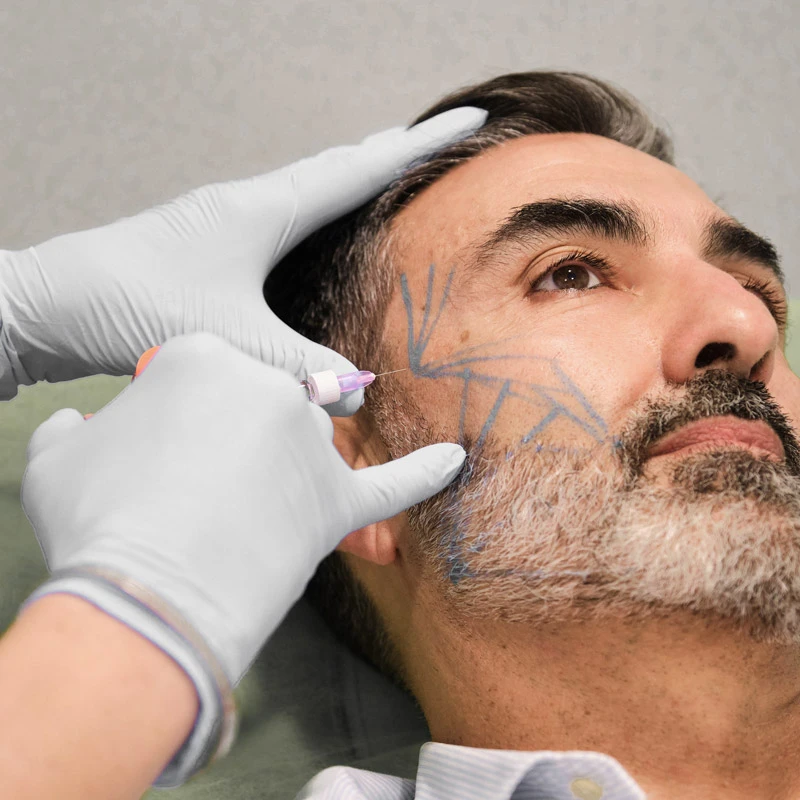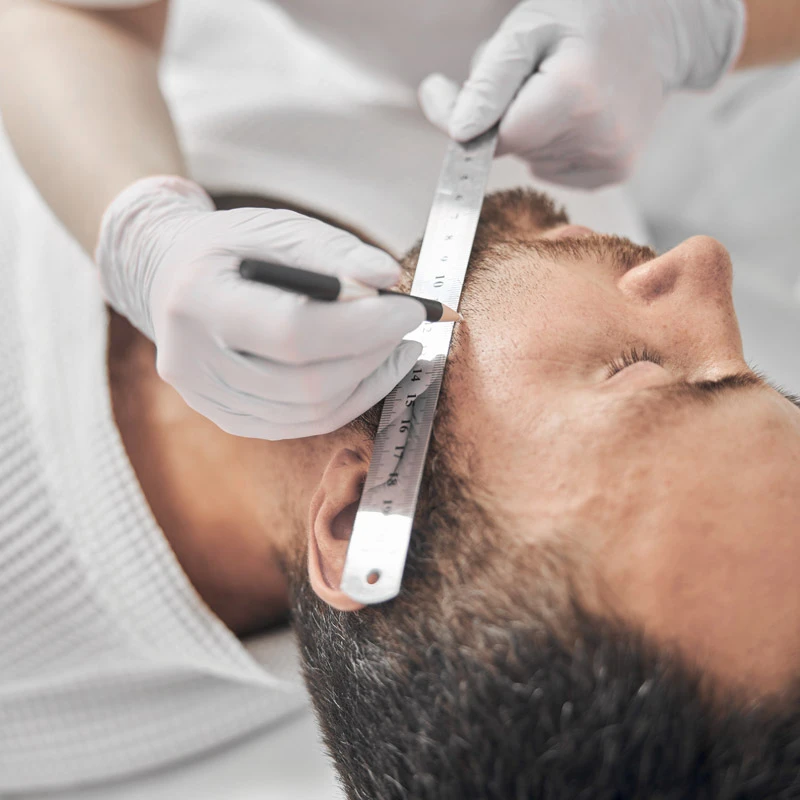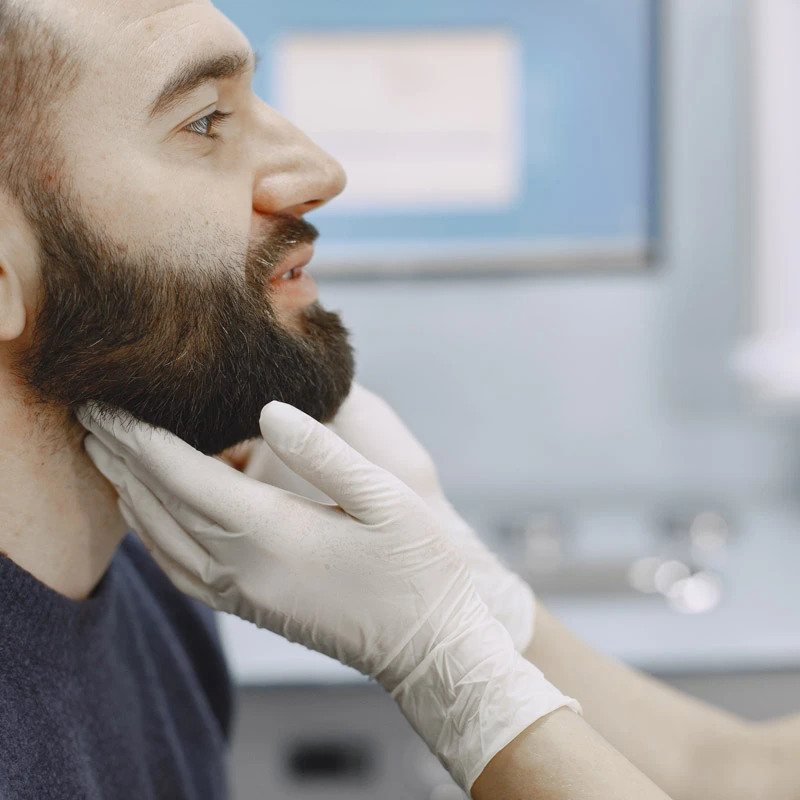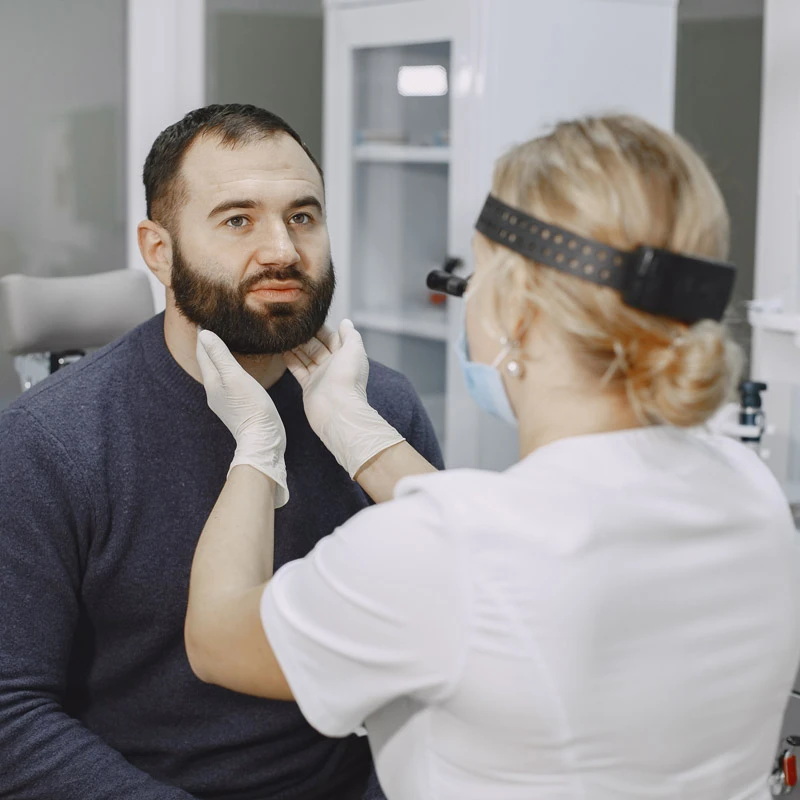

Sakal bölgesindeki kılların seyrekleşmesi veya dökülmesi, birçok erkek için hem dış görünümü hem de özgüveni olumsuz etkileyebilen hassas bir konudur.
Sakal ekimi, sakaldaki boşlukları doldurarak yeniden dolgun bir sakal görünümü sağlayan, kalıcı ve etkili bir çözümdür. Bu yazıda, hazırlık aşamasından işlemin detaylarına ve sonrasında yapılması gereken bakıma kadar sakal ekimi hakkında bilmeniz gereken her şeyi bulabilirsiniz.
FUE veya DHI gibi doğru yöntemin seçimi, başarılı bir sonuç için kritik önem taşır. En son teknolojiler ve deneyimli uzmanlar sayesinde hastalar, doğal ve estetik açıdan tatmin edici sonuçlara güvenle ulaşabilirler.
Özenli bir takip süreci ve kişiye özel destek, ideal bir iyileşme sürecini garanti eder.
Doğal Estetik Mükemmellik
Öncesi-Sonrası: Sakal Dönüşümünüz
Sakal ekimi işlemlerimizin etkileyici sonuçlarını keşfedin. Hastalarımızın işlem öncesi ve sonrası görünümlerine göz atarak ekibimizin profesyonel çalışmasını ve elde edilen doğal, kalıcı başarıyı inceleyebilirsiniz.






Sakal ekimi, enseden alınan saç köklerinin sakal bölgesine nakledildiği kozmetik bir işlemdir. Seyrek veya düzensiz sakal kıllarına sahip erkekler için dolgun ve estetik bir görünüm sağlar.
FUE veya DHI gibi modern tekniklerle tek tek saç kökleri istenen sakal bölgesine hassasiyetle yerleştirilir. Bu yöntemler, doğal bir görünüm elde etmeye yardımcı olurken yara izlerini de minimuma indirir.
Sakal ekimi, sadece düzensiz veya seyrek sakal kıllarını düzeltmekle kalmaz, aynı zamanda kişisel beklentilere göre şekillendirilebilen, estetik açıdan kişiye özel bir çözüm sunar. Saç köklerinin dikkatli yerleştirilmesiyle yüzün doğal hatları korunur. Ayrıca bu işlemler, kaşların sıkılaştırılması gibi farklı kozmetik ihtiyaçlar için de kullanılabilir, bu da işlemi çok yönlü kılar.
FUE veya DHI gibi modern tekniklerin hassas uygulanması, minimum yara izi ve yüz hatlarına saygı duyan kolay bir iyileşme süreci garanti eder.
Stamboul Clinic, sakal ekiminde en son teknolojileri ve yüksek tıbbi standartları benimseyerek, hastalarına doğal ve estetik açıdan üstün sonuçlar sunar.
Sakal ekimi, doktorun sakal ve donör bölgeyi inceleyerek gerekli saç köklerinin sayısını ve uygun tekniği (FUE veya DHI) belirlediği bir danışma ile başlar.
İşlem lokal anestezi altında yapılır ve neredeyse ağrısızdır. Donör bölgeden (genellikle enseden) saç kökleri titizlikle alınarak istenen sakal alanına hassasiyetle yerleştirilir. Bu özenli yerleştirme, düzenli bir sakal görünümü ve yüzün doğal hatlarına uyumlu estetik sonuçlar sağlar. Toplam işlem süresi, nakledilecek kök miktarına bağlı olarak birkaç saat sürebilir.
İşlem sonrası kısa bir dinlenme süresi önerilir. İlk günlerde hafif kızarıklık, şişlik veya kabuklanma görülebilir, ancak bu durum genellikle birkaç hafta içinde düzelir. Bu dönemde nakledilen alanın özenle bakımı, iyileşme sürecini destekler.
Nihai sonuç, birkaç ay içinde tam olarak ortaya çıkar; sakal bölgesindeki kıllar tamamen uzadığında doğal ve eşit bir görünüm elde edilir.
Öncesi-Sonrası: Sakal Ekiminizin Doğal Sonuçları
Sakal ekimi sonrasında hastalarımızın elde ettikleri etkileyici sonuçları keşfedin. Bu görseller, hassas uygulama ve en son teknikler sayesinde elde edilen kalıcı, doğal sonuçları ortaya koyuyor.
Tüm fotoğraflarımız için Instagram hesabımızı ziyaret edebilirsiniz: Instagram
Sakal ekimi lokal anestezi altında gerçekleştirilir, bu nedenle işlem sırasında ağrı hissedilmez. Hastalar yalnızca köklerin alınması ve yerleştirilmesi sırasında hafif bir baskı hissi deneyimleyebilir.
İşlem sonrasında, donör ve alıcı bölgelerde hafif gerginlik, şişlik veya kızarıklık görülebilir. Bu rahatsızlıklar genellikle hafiftir ve basit ağrı kesiciler veya soğuk kompreslerle kontrol altına alınabilir.
FUE ve DHI gibi minimal invaziv yöntemler, cildin yükünü en aza indirerek iyileşme sürecini kolaylaştırır.
Çoğu rahatsızlık birkaç gün içinde azalır ve birçok hasta sorunsuz bir iyileşme süreci bildirmektedir.
Modern teknikler ve doğru bakım sayesinde sakal ekimi, çoğu hasta için konforlu ve kolay tolere edilebilen bir estetik işlemdir.
Sakal ekimi genellikle 4 ila 8 saat arasında sürer. Bu süre, ekilecek saç köklerinin sayısı ve elde edilmek istenen sonuca göre değişiklik gösterebilir. Ayrıca, sakal kıllarının bireysel özellikleri ve FUE veya DHI gibi tercih edilen yöntem de süreyi etkileyebilir.
İşlem, donör bölgeden saç köklerinin özenle alınması ve istenen sakal bölgesine titizlikle ekilmesini içerir. Bu dikkatli çalışma, eşit ve doğal bir görünüm elde etmek için zaman gerektirir.
Ayaktan tedavi şeklinde uygulanan işlemden sonra, hasta genellikle aynı gün eve dönerek dinlenebilir. Doğru bakım ve dinlenme süreci, ekilen saç köklerinin optimal şekilde tutunmasına ve doğal görünümlü bir sakal oluşmasına yardımcı olur.
Stamboul Clinic, her sakal ekiminin sıkı kalite standartları altında gerçekleştirilmesine büyük önem verir.
Doktorlarımız, sakal ekimi konusunda uzun yıllara dayanan deneyime ve yüksek niteliklere sahiptir.
Bu uzun soluklu deneyimin, en son teknolojilerin ve uluslararası standartların birleşimiyle her adım titizlikle, en üst düzeyde uygulanır. Böylece sadece doğal ve estetik bir sonuç elde edilmez, aynı zamanda sorunsuz bir iyileşme süreci de desteklenerek hastaların tedaviye olan güveni artırılır.
Ayrıca tüm işlemler, en yeni teknolojik cihazlar kullanılarak ve uluslararası tıbbi standartlara uyularak gerçekleştirilir, bu da hastalarımıza doğal ve estetik sonuçlar garantiler.
HakkımızdaSakal ekimi, seyrek sakal kıllarını uzun vadede düzeltmek ve yeniden dolgun, doğal görünümlü bir sakala kavuşmak için güvenli ve etkili bir yöntemdir.
Stamboul Clinic, sürecin her aşamasında size en üst düzeyde bireysel ve kapsamlı bir destek sunarak, kendinizi rahat hissetmenizi ve sonuçlardan memnun kalmanızı sağlar.
En son teknoloji ve deneyimli bir ekiple, işleminizin hassas ve nazik bir şekilde gerçekleştirilmesi garantidir. Amaç, hem estetik hem de kişiye özel olan, uzun vadede memnuniyet sağlayacak bir sonuç elde etmektir.
Gelişmiş teknolojiler ve yıllara dayanan deneyim sayesinde, sakal ekiminizin tam bir başarıya ulaşmasını sağlıyoruz.
Ücretsiz Ön MuayeneSıkça Sorulan Sorular (SSS)
Sakal ekimi sonrasında bakım, iyileşme ve uzun vadeli sonuçlar hakkında birçok soru ortaya çıkar. Bu bölümde en sık sorulan soruları yanıtlayarak başarılı bir sonuca ulaşmanızı kolaylaştırıyoruz.






